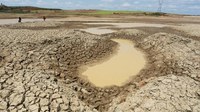The New Normal: Mekong Delta faces droughts and saltwater intrusion
Topic page on droughts and saltwater intrusion in the Mekong delta.
- Resource Type:
- Articles, Blogs and Updates
The New Normal: Mekong Delta faces droughts and saltwater intrusion
Vietnam’s Mekong Delta is the third-largest delta on Earth and home to nearly 18 million people, whose livelihoods rely mainly on agricultural and aquacultural production. Considered the “Rice Bowl” of Vietnam, the Delta supports more than half of the country’s total rice production and 95% of rice exports, contributing to Vietnam’s position as the world’s third-largest rice exporter. The region also produces 70% of the country’s fruits and more than 60% of the country’s seafood exports.1
The region has recently faced the most severe periods of drought and saline water intrusion in the last 100 years—notably in 2015–2016 and even more devastatingly in 2019–2020. Dry season droughts have become increasingly severe year over year, forcing the Government to declare a state of emergency and issue a call for international support. Increased salinity hit 10 out of 13 provinces in the Mekong Delta during the 2019 and 2020 seasons, affecting 58,000 hectares (ha) of rice, 6,650 ha of fruit trees, 1,241 ha of vegetables, and 8,715 ha of aquaculture. Up to 96,000 households or 430,000 people faced a shortage of daily use water.2In addition, a thousand spots of subsidence have been recorded around the Delta, causing substantial damage to roads and houses.3
The Mekong Delta’s recent drought and saltwater intrusion provide a guide to what could become the “new normal” and highlight the need to take action. No matter how much is done to adapt, the root causes of the issues must be addressed, or the situation will only continue to worsen.
Given that 90% of the Mekong River basin relies on foreign flows, the Delta is strongly influenced by the policies of water governance enacted by authorities throughout the whole Mekong watershed. However, current regional structures of governance and systems of management for trans-boundary resources in the Mekong region are complex—involving a web of organizations and a variety of partners both inside and outside the region—making the situation challenging to address in a timely and coordinated manner. With the Delta facing losses and damages beyond its resilience and adaptive capacity, the Government should move diplomatically to reduce the negative impacts caused by upstream activities and take strong measures to end the overexploitation of sand and groundwater.33Sharing and managing risks must be considered at all grassroots, national, and international levels—because the window of opportunity for mitigation and adaptation is closing fast.34

